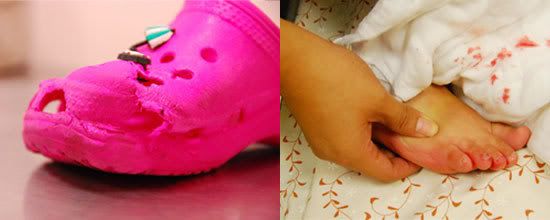About 2,000 children are injured riding escalators annually, researchers here report reported Jennifer McGeehan, M.P.H., and colleagues of Ohio State University in the August issue of Pediatrics.
The risk of injuries, including amputations, was highest for children younger than five, and more than half of injured children are boys.
Over a 13 year period from 1990 to 2002 there were an estimated 26,000 escalator-related injuries among children and teens younger than 19.
Twelve thousand of those injuries occurred in children younger than five for an escalator injury rate of 4.8 per 100,000 children, they wrote.
According to data culled from the National Electronic Injury Surveillance System, 67.4% of all escalator injuries are caused by falls, 9.7% by entrapment, and 3.2% by a combination of fall and entrapment. But for children four or younger, 45.1% of injuries are caused by falls and 36.5% by entrapment, the authors wrote.
This was the first study to use a national database to estimate escalator injury rates nationwide, the authors wrote.
Escalator redesign to narrow the space between the moving stairways and the stairwell wall would make escalators safer, the authors wrote. But that was only half their prevention message. The other half was a caution to parents and caregivers to closely supervise young children and avoid transporting children in strollers when riding escalators.
The injuries ranged from relatively minor cuts and bruises caused by falls to amputations and avulsions usually caused by entrapment, meaning that a child's hand, foot or clothing becomes entrapped in the space between the moving stair and the stair well wall. More than 70% of amputations and avulsions occurred in children four or younger.
Many public buildings post signs warning that children in strollers should be transported by elevator, yet injuries involving strollers accounted for 6% of those reported in the database that tracks escalatory injuries, which suggests that parents frequently ignore posted warnings.
Other findings:
- Lacerations account for 47.4% of all injuries, with hands and fingers the most common sites of laceration among toddlers. In most cases the laceration was caused by contact with the edge of the escalator step.
- The second most common injury category was abrasions and contusions, which accounted for 24.4% of injuries and were most common among children ages five to nine.
- Just over 8% of injuries were fractures and 7.5% were strains or sprains.
- Most amputation/avulsions were the result of entrapment (86.2%) and 92.1% were hand injuries.
The US Product Safety Commission has issued recommendations to help prevent escalator-related injuries. These include:
- Removal of drawstrings from children's clothing;
- Supervision of young children while using an escalator;
- Holding the child's hand or picking up the child when riding on the escalator;
- Not transporting children on the escalator in a stroller or cart;
- Facing forward and holding onto handrails to avoid falls;
- Avoiding the sides of escalator steps to prevent entrapment between the escalator step and the sidewall.
The authors cautioned that the study was limited by possible missing data and inconsistent documentation in the database. Additionally, the reporting of some injuries, they wrote, may be underestimated. Moreover, the injury reports were based on emergency department records, so injuries treated in other settings such as physician offices were not included.
Source reference:
McGeehan J et al "Escalator-Related Injuries Among Children in the United States, 1990-2002" Pediatrics 2006; 118: e1-e6
Keeping Your Child Safe on an Escalator
Illinois escalator accident lawyers understand that parents want to protect their children from getting hurt. However, in order to do that, parents must know how to protect their children. It is a tough job, particularly when something as seemingly simple as riding the escalator at the mall can be dangerous.
Escalator Safety Tips
Whether you are traveling up or down the escalator, the following tips can help you keep your child safe:
- Dress Appropriately: The U.S. Consumer Product Safety Commission (CPSC) cautions parents that certain articles of clothing or styles of apparel can be dangerous on escalators. Of particular concern are loose shoelaces and drawstrings in coats, sweatpants or sweatshirts, scarves, and mittens. In recent years, the popular Croc style shoes have been involved in escalator accidents and allegedly caused serious injuries to children.
- Hold Your Child’s Hand: Not only can you properly position your child in the middle of the stair, away from the entanglement perils of the escalator sides, you may also be able to prevent a slip and fall accident.
- Teach Your Child the Proper Way to Ride an Escalator: Insist that your child always stand, and never sit, on the moving steps. Require your child to pay attention and save any fooling around until you are safely off of the escalator. Encourage your child to always face forward and pay attention to the steps, the rails, and the edges of the escalator.
- Only Bring Your Child and Your Bags on the Escalator: Do not bring strollers or shopping carts. They are too big and cannot safely fit on the escalator steps.
- Never Walk on a Nonmoving Escalator: The size of the stairs is different from that of a regular staircase. Thus, it is easier to misjudge your footing and fall.
- Know Where the Emergency Shut Off Buttons are Located: Escalators should have emergency shut off buttons at the top and bottom. When you press the button, the escalator should stop. If your child becomes entangled in the escalator, it is important to stop the machine as soon as possible. If you cannot safely reach the button, direct someone else to do it – quickly.





